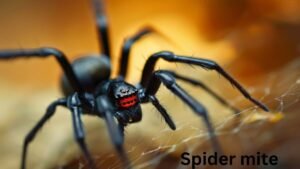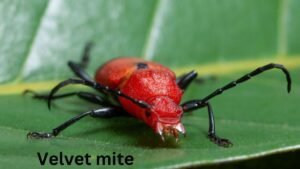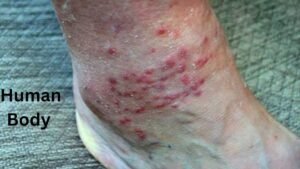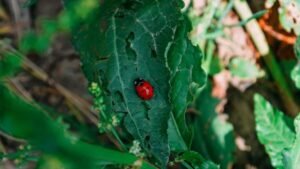Welcome to the fascinating world of tiny red bugs! These minuscule crimson creatures may be small in size, but their presence can create quite a buzz. From invading our homes to wreaking havoc on plants, these little pests sure know how to make a big impact. Join us as we delve into everything you need to know about the invasion of tiny red bugs and how to deal with them effectively. Let’s uncover the secrets behind these pint-sized troublemakers!
Types of Tiny Red Bugs and Where They Are Found
When it comes to tiny red bugs, there are a few common types that you may encounter. One of the most well-known is the clover mite which tends to be found in grassy areas and gardens. These small red bugs can also make their way into homes through tiny cracks and crevices.
Another type of tiny red bug is the spider mite, which often infests plants both indoors and outdoors. These pests can wreak havoc on your beloved houseplants by feeding on their sap,  leading to yellowing leaves and stunted growth.
leading to yellowing leaves and stunted growth.
If you happen to spot tiny red bugs clustered together on tree bark or plant stems, they could be red velvet mites. While these vibrant creatures may look intriguing, they can still pose a threat to certain plants if left unchecked.
While these vibrant creatures may look intriguing, they can still pose a threat to certain plants if left unchecked.
It’s important to identify the specific type of tiny red bug you’re dealing with in order to effectively address any potential infestations before they get out of hand.
Why are Tiny Red Bugs Considered an Invasion?
Tiny red bugs have earned their reputation as invaders for their sheer numbers and ability to quickly infest an area. These tiny pests multiply rapidly, making it easy for them to overwhelm a space in no time. Their small size allows them to hide in crevices and cracks, making detection challenging until the population explodes.
When tiny red bugs invade gardens or homes, they can cause significant damage to plants and crops by sucking out sap from leaves, leading to wilting and yellowing foliage. This not only affects the aesthetics of the garden but also compromises the health of plants.
The invasion of tiny red bugs can also pose a threat to human health as some species are known to bite humans when their populations surge. While these bites are usually harmless, they can cause irritation and discomfort.
The invasion of tiny red bugs is a nuisance that requires prompt action to prevent further spread and damage.
Effects of Tiny Red Bugs on Humans and Plants
Tiny red bugs may be small in size, but their impact on both humans and plants can be significant. When these tiny pests invade your home or garden, they can cause irritation and discomfort to your skin if you come into contact with them. Some people may even experience allergic reactions to their bites.

In addition to affecting humans, tiny red bugs can also wreak havoc on plants. These pests feed on plant sap, which weakens the plant’s overall health and vigor. This can result in stunted growth, wilting leaves, and decreased fruit or flower production.
 If left unchecked, a large infestation of tiny red bugs can lead to widespread damage in your garden or indoor plants. It is essential to address these issues promptly to prevent further harm and restore the health of both humans and plants alike.
If left unchecked, a large infestation of tiny red bugs can lead to widespread damage in your garden or indoor plants. It is essential to address these issues promptly to prevent further harm and restore the health of both humans and plants alike.
Prevention and Control Measures for Tiny Red Bug Infestations
One of the key ways to prevent and control tiny red bug infestations is by practicing good garden maintenance. Regularly inspect your plants for any signs of these pesky pests and take action immediately if you spot them.
Another effective method is to create physical barriers around your garden beds using fine mesh or row covers. This can help keep the tiny red bugs from accessing your plants and causing damage.
Consider introducing natural predators like ladybugs or lacewings into your garden as a biological control method. These beneficial insects can help keep the population of tiny red bugs in check without the need for harmful chemicals.
Additionally, avoid over-fertilizing your plants as this can attract more pests, including tiny red bugs. Opt for organic fertilizers instead to promote healthy plant growth while deterring unwanted visitors.
Natural Remedies for Getting Rid of Tiny Red Bugs
If you’re dealing with a pesky infestation of tiny red bugs, natural remedies can be an effective and eco-friendly solution to get rid of them. One approach is to use neem oil, a natural insecticide derived from the seeds of the neem tree. Simply mix a few drops with water in a spray bottle and apply it to areas where the bugs are present.
Another option is diatomaceous earth, a fine powder made from fossilized algae. Sprinkle this powder around windowsills, doorways, and other entry points to create a barrier that deters the bugs from crossing. Additionally, essential oils like peppermint or tea tree oil can act as repellents for these unwelcome guests.
Creating homemade traps using dish soap and water can also help capture and eliminate tiny red bugs. Place these traps near areas where you’ve seen the most activity. Remember to regularly clean your living spaces and remove any clutter or debris that could provide hiding spots for these insects.
Steps to Take if You Come Across a Large Infestation of Tiny Red Bugs
Discovering a large infestation of tiny red bugs can be unsettling, but taking swift action is crucial. The first step is to avoid panicking and carefully assess the extent of the invasion.
Next, consider contacting a pest control professional who specializes in dealing with these types of bugs. They will have the expertise and tools needed to effectively eradicate the infestation from your home or garden.
In the meantime, it’s essential to limit their spread by isolating any affected plants or areas. Remove any debris or clutter that may provide hiding spots for these pests.
Consider using natural remedies like neem oil or diatomaceous earth as temporary solutions while waiting for professional help. Regularly monitor the situation to ensure that the population is declining.
Remember, prevention is key to avoiding future infestations, so take steps to seal off entry points and maintain good hygiene practices in your living spaces. Stay vigilant and proactive in managing these tiny red invaders!
Conclusion
Being aware of tiny red bugs and their potential invasion is crucial for maintaining a healthy environment both indoors and outdoors. By understanding the types of tiny red bugs, their habitats, and the effects they can have on humans and plants, you can better prepare yourself to prevent and control infestations. Utilizing natural remedies and taking proactive measures can help in getting rid of these unwelcome pests effectively. Remember, early detection and swift action are key to managing any invasion of tiny red bugs successfully. Stay vigilant, implement preventive strategies, and seek professional help if needed to keep your surroundings bug-free.

